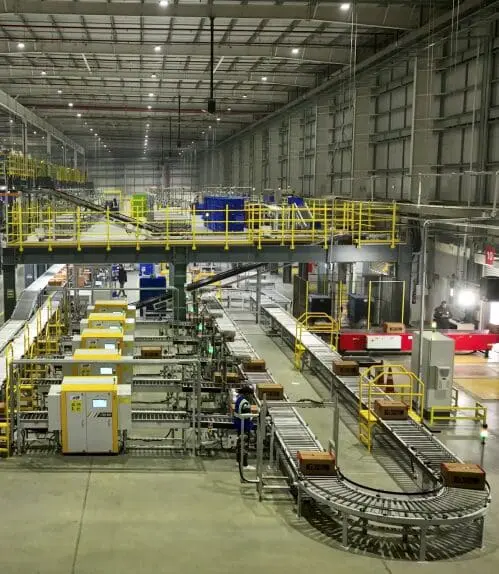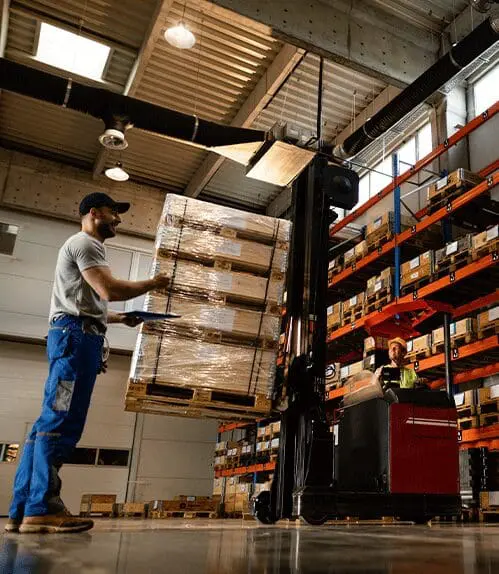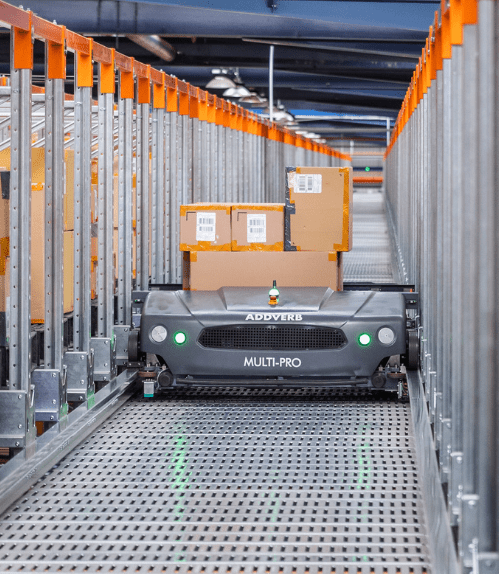Table of Contents
Autonomous Mobile Robots (AMRs) are integral in transforming the business landscape. Learn about AMR fundamentals, recent advancements, and their role in enhancing efficiency, safety, and flexibility. Explore the key factors driving the rise of AMRs and their impact on accelerating order fulfillment, simplifying integration, and optimizing expenses.
Key Learnings:
- Understanding Autonomous Mobile Robot Definition and their types.
- The recent advancements in technology have facilitated the development of AMRs.
- AMRs can operate with minimal human intervention, reducing the need for manual labor.
- AMRs can pick and move goods with high precision and accuracy, reducing the risk of errors.
- AMRs can save the effort and time of the human workforce by taking up mundane tasks.
What are Autonomous Mobile Robots (AMRs)?
Autonomous Mobile Robots (AMRs) operate independently in warehouses, performing tasks such as order picking, inventory control, and product transportation. They can interact with human operators and integrate with existing systems, improving overall efficiency.
Equipped with advanced sensors, AMRs navigate warehouse environments, avoiding obstacles while performing tasks. Unlike Automated Guided Vehicles (AGVs), AMRs autonomously determine the most efficient path for each task and can collaborate for picking and sorting operations.
Usually, AMRs can be classified into three varieties:
- AMRs that help in the process of picking
- AMRs that transport inventory within the facility
- AMRs that provide a flexible sortation solution
The Rise of Autonomous Mobile Robots.
The use of Robotics in warehouses is not a newly arrived concept. However, recent technological advancements have facilitated the development of AMRs that are more efficient, flexible, and cost-efficient. AMRs are equipped with software and sensors that allow them to navigate independently, preventing errors and adapting to environmental changes. This makes them ideal for use in complex and dynamic warehouse environments.

The Rise can be attributed to several key factors:
- Technological advancements: AMRs have benefited from significant advancements in sensors, AI, and machine learning, enabling them to navigate complex environments and interact with human operations.
- Budget-friendly: AMRs are becoming more affordable which has played a significant role in increasing the adoption of autonomous mobile robots for logistics and material handling processes.
- Adaptable and flexible: These robots are designed to be flexible and easily reprogrammable, allowing them to adopt changing operational needs and layouts.
- Enhanced safety: AMRs are equipped with advanced safety features, such as obstacle detection and collision avoidance, making them to operate in shared workspace with humans.
- Labor shortages: Businesses to explore automation solutions like AMRs to address challenges in finding and retaining skilled labor, and maintaining operational efficiency.
Accuracy, Safety, Adaptability and Efficiency of Autonomous Mobile Robots
Already being used in the supply chains of logistics, e-commerce, textiles, food, beverages, electronics, pharmaceuticals, machinery, and printing organizations, Autonomous Mobile Robots are utilizing the power of digitalization to unlock several benefits for businesses and their customers.
By leveraging the potential of the latest technology to determine optimal routes and ensure enhanced productivity, autonomous mobile robots are well-trusted for their accuracy, safety, adaptability, and efficiency. Let us find out some of the ways autonomous mobile robots are transforming warehouse management systems and making them safer, smarter, and more efficient.

Faster order fulfillment: By automating product movement within the facility, businesses not only reduce overall transportation time through the warehouse but also minimize the chances of mental/physical fatigue thus making fewer mistakes and incurring accidents.
Making integration of automation simple: In comparison to other automation systems, it is relatively easier to integrate AMRs in order fulfillment centers and warehouses. Furthermore, there is no need to make expensive, permanent, or operational changes when deploying AMRs. They can be seamlessly integrated during working hours since implementation does not obstruct the day-to-day functions of your facility.
Directing workflows to enhance efficiency and accuracy: AMRs are highly versatile. Not only do they contribute to expediting the picking process by managing the tiresome task of transporting products around, but some collaborative robots can navigate inventory locations, display the quantity of the items to be picked, direct workflows, and keep associates on track leading to greater efficiency and accuracy of order fulfillment operations.
Making capital expenses flexible: AMRs can be integrated without needing permanent or costly infrastructural changes to distribution and warehouse facilities. They utilize maps to navigate through the floors of warehouses, independently detecting and avoiding obstacles.
Conclusion
Autonomous mobile robots (AMRs) are reshaping industries by enhancing efficiency, safety, and adaptability. Their capacity to navigate and execute tasks independently positions AMRs as pivotal in automation. As technology progresses, we anticipate witnessing groundbreaking applications for AMRs across diverse sectors. This is a thrilling era for robotics advancement, and AMRs are leading the way in this remarkable evolution.







